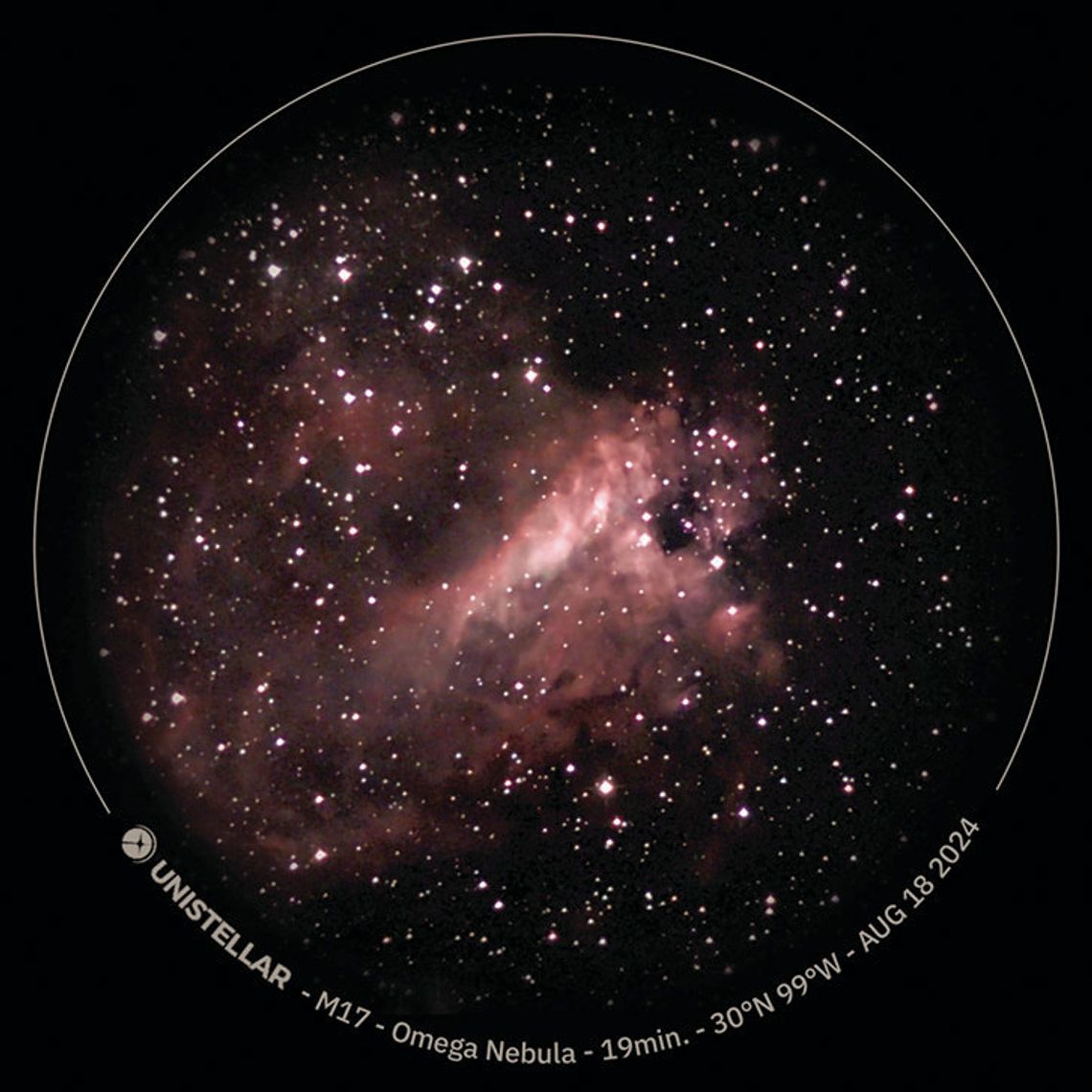Last month in my article, I wrote that mid-to-late summer is the most favorable period to see the Milky Way. In Texas as far south as we live, this also applies to September.
One of my favorite targets to view and image in the late summer is M17, the Omega nebula (or as I’ve known it all my life, “the Swan”). It lies in our far southern sky in Sagittarius. Note we see it in the northern hemisphere upside down.
The Swan is in the center with a curved neck and floating on water. It’s much easier to see it as a swan visually than in a photograph.
The accompanying photo was a 19-minute stack of four-second exposures Aug. 18 with a full moon nearby. The new generation of smart telescopes do a wonderful job of removing light pollution when imaging, even natural moonlight. It’s really too bad this modern magic doesn’t work visually.
This nebula is at a distance of 5,500 light years and it’s approximately 10 light years in diameter It is one of many star forming regions.
I also mentioned the Perseid meteor shower last month which occurred on the morning of Aug 12. I was out from 1:45 to 3:45 a.m. and it was a good shower. We witnessed several bright meteors and one that was probably a piece of space debris, since it came in from the wrong direction. It was also very bright green, meaning metallic, and it left a long trail as it disintegrated in the upper atmosphere.
Now, were you aware that our Earth “day” is gradually getting longer? It’s not something you’ll notice in your lifetime but it’s real.
The reason? The moon has been slowing down the Earth’s rotation by exerting its gravitational pull on us ever since it was first formed. The rate of change per century is about 2 milliseconds. But over many millennia, it has increased the length of a day by a full hour.
To put a bow on it, 65 million years ago when the ‘Age of Dinosaurs’ came to an end, their day was 23 hours long.
That’s not the only difference between the planet we know today and back then. It takes approximately 250 million years for our solar system to orbit the center of the Milky Way galaxy, and each star also has its own proper motion in addition to the rotation mentioned above.
The Earth was on the other side of the galaxy when dinosaurs were alive, meaning they saw a far different night sky than what we witness. Indeed, by the standard of our very short lives, the night sky hardly changes at all.
It would be quite a mistake to assume that it “actually” never changes, however. It’s estimated that, when the moon was first formed, the day on Earth was between two and 10 hours. Over a great deal of time, the moon has moved further away, thus lengthening our day to 24 hours.
This gradual change will forever be so. Our atomic clocks have to take this into account to make satellite positioning and GPS as accurate as possible.
Things to see in September:
— Saturn is at opposition this month, which means it will be visible all night long and be directly overhead and to the south at midnight. Unfortunately, it’s beautiful ring system is tilted nearly horizontal to us so it’s difficult to see. It will take another 13 years for the ring system to be completely wide open from our vantage point.
— On Sept. 17 we’ll be treated to the Harvest Moon which also is a supermoon this year. That means it’s somewhat closer to the Earth than normal and somewhat brighter.
— Autumn begins on Sept. 22 in the northern hemisphere and spring begins south of the equator. Hopefully we’ll start to feel cooler weather here.








Comment
Comments